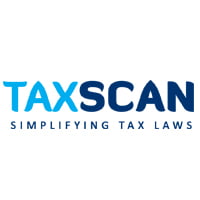Levy of Surcharge and Cess cannot Exceed Tax Rate of 10% As Per India – Japan DTAA: ITAT [Read Order]
![Levy of Surcharge and Cess cannot Exceed Tax Rate of 10% As Per India – Japan DTAA: ITAT [Read Order] Levy of Surcharge and Cess cannot Exceed Tax Rate of 10% As Per India – Japan DTAA: ITAT [Read Order]](https://www.taxscan.in/wp-content/uploads/2023/01/Levy-Surcharge-Cess-Levy-of-Surcharge-Levy-of-Surcharge-and-Cess-Tax-Rate-India-Japan-DTAA-DTAA-ITAT-Taxscan.jpg)
The Income Tax Appellate Tribunal (ITAT), Delhi Bench, has recently, in an appeal filed before it, held that the levy of surcharge and cess cannot exceed the tax rate of 10%, as per India – Japan DTAA.
The aforesaid observation was made by the Delhi ITAT, when an appeal was preferred before it by the assessee, FCC Co. Ltd, challenging the final assessment order dated 27.06.2022, passed under section 143(3), read with section 144C(13) of the Income-tax Act, 1961, pertaining to the assessment year 2017-18, in pursuance to the directions of learned Dispute Resolution Panel (DRP).
The ground of the assessee’s appeal being as to whether surcharge and cess can be levied over and above tax, computed at the rate of 10% as per the treaty provisions of India – Japan DTAA, the facts of the case relating to this issue were that the assessee was a non-resident corporate entity incorporated in Japan and a tax resident of Japan, who was engaged in the business of manufacturing of clutch systems and facings for cars, motorcycles, utility vehicles and other engines, along with the moulding and machining of plastics and manufacturing of various specialized tools and dyes.
Initially, the assessee had entered into a joint venture in the name and style of FCC Ricko Ltd., which ultimately merged with a wholly owned subsidiary of the assessee in India, namely, FCC Clutch India Pvt. Ltd., engaged in a similar business of manufacturing and supplying automobile clutch assembly. And In the year under consideration, the assessee had entered into various international transactions with its AE in India.
In the return of income filed by the assessee for the assessment year under dispute, the assessee had declared an income of Rs.79,65,46,784/- and offered to tax at the rate of 10% as per the treaty provisions, and in the course of the assessment proceeding, it was so noticed by the Assessing Officer that the incomes offered by the assessee were in the nature of royalty, Fee for Technical Services (FTS) and interest income, whereas, the amounts of Rs. 94,95,87,223/- and Rs.54,03,953/- received by the assessee towards sale of raw materials , components and capital goods, respectively, were not offered to tax on the plea that the said supplies had been made on a principal to principal basis outside India and that the property/title in goods were transferred outside India.
However, after examining the Master Sales Agreement and other materials on record, the Assessing Officer was of the view that the wholly owned subsidiary of the assessee in India is effectively the assessee’s PE in India and that the raw materials and capital goods sold by the assessee were effectively connected with the activities of the PE. And while coming to such a conclusion, the Assessing Officer referred to the assessment order passed for assessment year 2015-16. And, following the decision taken in the preceding assessment year, thus ultimately held that 50% of the amount received towards the sale of raw materials and capital goods, is attributable to the PE in India as business income. Accordingly, he added back an amount of Rs.2,77,42,494/-.
Against the draft assessment order so passed, the assessee raised objections before DRP, and though, the DRP was conscious of the decision of the Tribunal in assessment years 2014-15 and 2015-16 holding that the assessee had no PE in India, he, however, following the direction of DRP in assessment year 2017-18, observed that the earlier view of DRP was to be followed.
However, the DRP directed the Assessing Officer to verify assessee’s claim in terms of Tribunal’s orders and to complete the assessment, keeping in view, the department’s stand on the acceptance of ITAT orders, or preferring litigation against the orders of the Tribunal. And based on the aforesaid direction of DRP, the Assessing Officer thus confirmed the addition made in the draft assessment order.
Hearing the opposing contentions of either sides as presented by shri. K.M. Gupta and Ms. Shruti Khimta, the counsels appearing for the assessee ,and Shri. Anand Kumar Kedia, the CIT(DR), the ITAT Bench consisting of G.S. Pannu , the President, andSaktijit Dey , the Judicial Member observed :
“It is a common point before us that the issue is squarely covered by the decisions of the Tribunal in assessee’s own case in assessment years 2014-15 and 2015-16. Copies of the relevant orders of the Tribunals were placed on record.”
“Having considered the rival submissions, in principle, we accept the assessee’s contention that levy of surcharge and cess cannot exceed the tax rate of 10% as per India – Japan DTAA. Article 12 of India – Japan tax treaty provides that the tax to be charged on royalty and FTS shall not exceed 10% of the gross amount of royalty or FTS. Article 2 of the tax treaty defines tax in India as income tax including any surcharge thereon. Therefore, Article 12 read with Article 2 of the tax treaty makes it clear that the rate of tax at 10% would encompass surcharge and education cess as it is also in the nature of surcharge.”, the ITAT Bench further added.
Thus, allowing the assessee’s appeal, the Delhi ITAT ruled :
“Therefore, we hold that levy of surcharge and cess over and above the taxable rate of 10% on royalty and FTS is not permissible as per the treaty provisions.”
To Read the full text of the Order CLICK HERE
Support our journalism by subscribing to Taxscan premium. Follow us on Telegram for quick updates
FCC Co. Ltd. vs ACIT , 2023 TAXSCAN (ITAT) 311 , Sh. K.M. Gupta,Ms. Shruti Khimta , Sh. Anand Kumar Kedia

